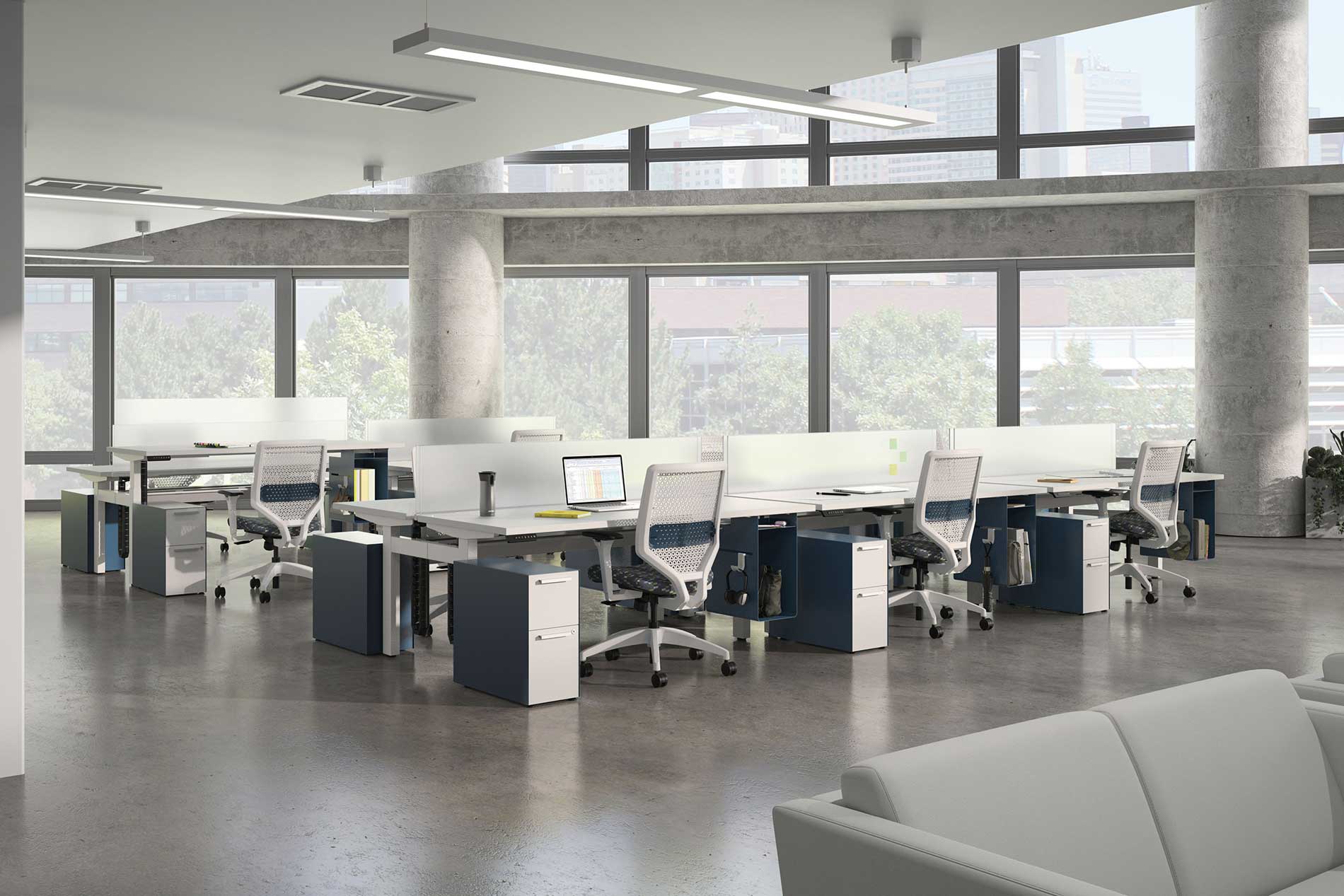Blog
What is Flex Office Space?
The first question many people have is, what is flex space? The concept of a flex office refers to a space that can accommodate the ever-changing needs of a hybrid workforce. Designed with furniture that is completely mobile, these spaces can be shifted from day to day or even from hour to hour as needed. There are generally few commitments involved in flexible offices, while they provide workers with space-saving solutions that help to maximize their efficiency.
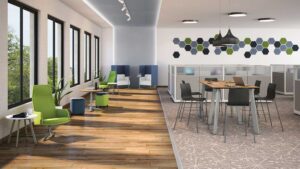

The flexibility of a flex office enables it to respond to the changing needs of a hybrid workplace, and many flex spaces contain mixed-use areas. Collaboration spaces, break rooms, or workstations can be utilized in these areas. The flexibility of these spaces enables them to accommodate groups of people with a variety of resources and amenities. Depending on the individual, some people require a quiet, private environment, while others require an open, collaborative space. In a flex office, how are the resources allocated to accommodate everyone’s changing needs?
The Needs of Workers
The flex office may be used by individuals for a brief period as their personal office, while companies might use the office to accommodate visitors from out of town or to provide temporary office space for temporary employees. A flex space can meet the needs of everyone, regardless of their situation. As a flexible space accommodates workers according to their needs, it must be able to move and shift easily. While it may seem impossible to combine privacy and focus with creative and collaborative work, these elements can be easily integrated within a hybrid office setting. Specialized furniture, partitions, and modular cubicles that can be easily added or removed from a space can be used to address these issues. Flexible workspaces allow workers to maximize the use of their space.
The Hybrid Employee
Flex spaces in the workplace are attractive to hybrid workers, and we have seen changes in how and when employees work in and out of the office. Although employees may be able to access some resources offsite, they still need a place to meet and collaborate, which makes flex office spaces an ideal option.
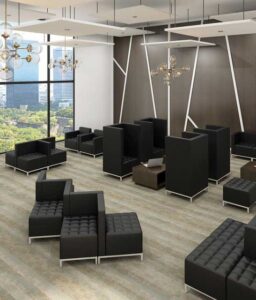

As hybrid workforces become more prevalent, the number of employees in the office is decreasing at any given time, requiring less space, so with these changes, functionality is very important. Since less time is spent in individual offices throughout the week, storage, furniture, and privacy solutions are important elements of a flexible office.
Modular Furniture
Whenever a space needs to be rearranged to accommodate varying needs and group sizes, furniture should be easily moved. Cubicles, for example, can be expanded to provide adequate desk space, making them an ideal choice for offices that require both privacy as well as collaborative space. It is imperative that furniture be designed to meet the needs of a wide range of professionals, regardless of whether it is modular desk solutions, seating, or partitions. When the right pieces are integrated into your office layout, the possibilities are endless. This example features pieces from Indiana Furniture.
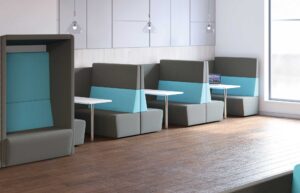

Partitions
In a traditional open office without partitions, there is almost nothing to prevent you from viewing the other side of the room. In this type of office, each employee has his or her own cubicle or desk. In some situations, this setup may be effective, when employees are all performing the same type of work and have similar needs. Employees’ priorities are changing as hybrid work becomes increasingly prevalent.
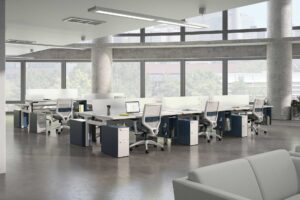

Hybrid work is undoubtedly changing the workplace, and flex office spaces allow these large areas to be divided up. Flex spaces use a variety of partitions, but they almost all serve two purposes, either mobile or modular. Therefore, they can be arranged to create smaller, more focused areas or expanded to accommodate larger groups. When reorganizing an area, a partition can be rolled out of the way with ease, saving time and space.
Creating a Flexible Space in your Office
The rise of hybrid work is undoubtedly transforming the office and the number of employees can vary dramatically from day to day. Most workers prefer to work two days a week in the office, and most companies offer a hybrid schedule that is based on at-will employment, so it is evident that the office environment is constantly changing.
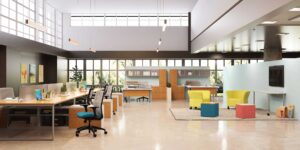

As a result of this change, there is a definite decrease in the number of employees who are in the office each day. In addition, when these employees are in the office, they are mainly collaborating with their colleagues. If you wish to support this growing need for collaboration in your office, you may consider creating a flexible workspace or several different work areas. When businesses have the ability to use their space as they need it when they need it, workers will always be able to locate the appropriate location for the tasks at hand.
Compared to traditional office furniture, multi-purpose furniture offers additional functionality. Spaces can be transformed to provide collaborative areas for several employees or private areas for one individual all by rolling an extra partition into the space. Meeting rooms, large open workspaces, and individual offices are becoming a thing of the past in many offices.
There is no denying that flex office spaces are here to stay, and PVI can help you design the perfect flex office space for you!

